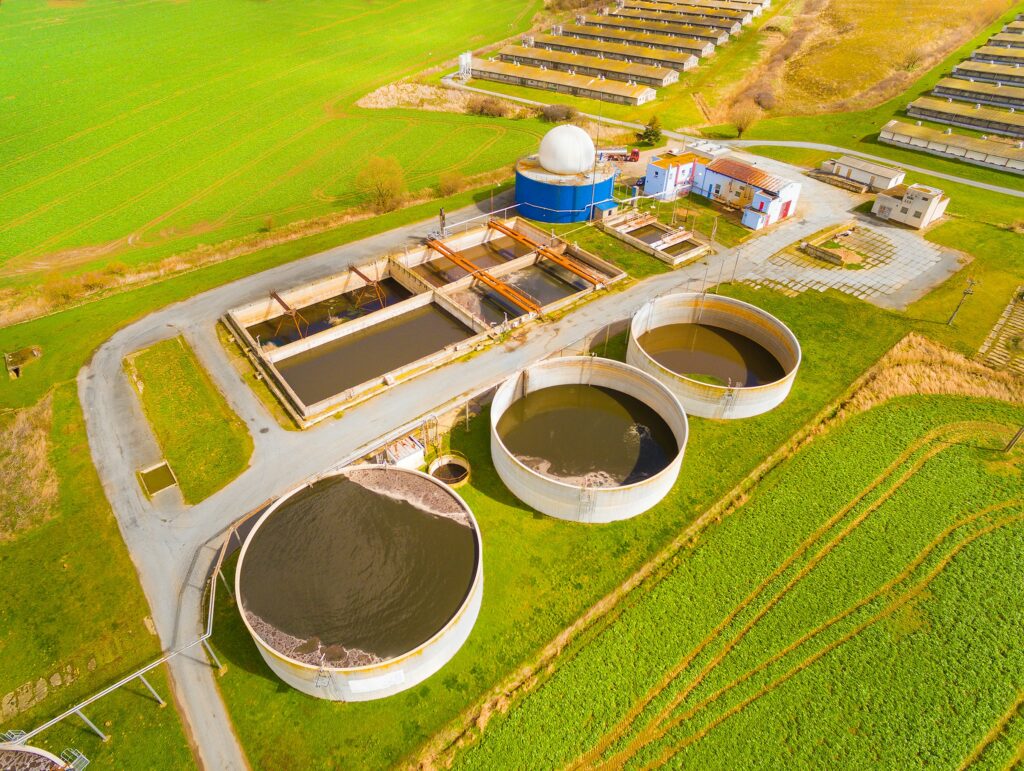Biogas is a renewable energy source produced through the anaerobic digestion of organic materials such as agricultural residues, animal manure, food waste, and sewage sludge. As the world moves toward sustainable and eco-friendly energy alternatives, biogas has emerged as a key player, offering multiple environmental and economic benefits.
This blog explores how biogas is applied across various sectors, helping reduce greenhouse gas emissions, manage waste effectively, and provide affordable, clean energy.
⚡ 1. Power Generation
One of the most common uses of biogas is for generating electricity and heat. Biogas can be burned in combined heat and power (CHP) systems, which simultaneously produce electricity and capture usable heat. This dual production makes biogas an efficient and eco-friendly power source.
- Municipal Waste-to-Energy Plants: Cities and towns use biogas plants to process sewage and organic waste, generating electricity that can power treatment facilities or feed into the grid.
- Agricultural Farms: Many farms convert animal manure into biogas, using the energy on-site for lighting, heating, or machinery.
- Food Processing Units: Industries process food waste to generate energy, reducing reliance on grid electricity and fossil fuels.
Biogas-powered generators reduce carbon emissions by replacing coal, diesel, or natural gas, and help decentralize energy production, improving energy access in rural or off-grid areas.
🔥 2. Cooking and Heating
In many rural and semi-urban areas, biogas provides a clean and efficient alternative to traditional cooking fuels such as firewood, charcoal, and LPG. Burning biogas produces virtually no smoke, helping improve indoor air quality and reduce respiratory illnesses.
- Households: Family-sized digesters produce enough biogas for daily cooking needs, replacing polluting fuels and lowering energy costs.
- Community Kitchens and Hostels: Institutions serving large groups benefit from centralized biogas plants that supply clean cooking fuel reliably.
- Schools and Healthcare Centers: Biogas ensures uninterrupted cooking and heating, especially in remote areas.
Beyond cooking, biogas can be used for heating water and spaces, offering a versatile thermal energy source for domestic and institutional applications.
🚛 3. Transportation Fuel (Bio-CNG)
Upgraded biogas, known as Bio-Compressed Natural Gas (Bio-CNG), is purified and compressed to meet vehicle fuel standards. It is a clean, renewable alternative to petrol and diesel, significantly reducing carbon and particulate emissions.
- Public Transport: Many cities are adopting Bio-CNG for buses and shared transport vehicles to reduce pollution.
- Commercial Fleets: Logistics companies convert vehicles to Bio-CNG, benefiting from lower fuel costs and government incentives.
- Two- and Three-Wheelers: Auto rickshaws and taxis running on Bio-CNG contribute to cleaner urban air.
Bio-CNG infrastructure includes purification, compression, and refueling stations, making it an increasingly viable option for sustainable transportation.
🏭 4. Industrial Applications
Biogas is becoming popular in industries as a substitute for fossil fuels in heating and power generation. Its use helps industries cut down greenhouse gas emissions while reducing operational expenses.
- Process Heating: Food processing, textile manufacturing, and chemical industries use biogas for steam production and direct heating.
- Power Generation: Some factories run gas engines fueled by biogas to generate electricity onsite.
- Boilers and Furnaces: Biogas-fired boilers provide thermal energy for various industrial processes.
Integration with automation and IoT allows industries to monitor and optimize biogas usage, enhancing efficiency and reliability.
🌾 5. Agriculture and Farming
Farmers are turning waste into wealth by generating biogas from livestock manure, crop residues, and agro-industrial by-products. The process also produces digestate — a nutrient-rich slurry that acts as a natural fertilizer, promoting sustainable farming.
- Greenhouse Heating: Biogas powers heaters that extend growing seasons in colder climates.
- Irrigation: Biogas-fueled pumps ensure reliable water supply for crops.
- Soil Fertility: Digestate improves soil health, reduces chemical fertilizer use, and supports organic farming.
This cyclical approach reduces farm waste, lowers energy costs, and boosts productivity while protecting the environment.
🗑️ 6. Waste Management and Circular Economy
Biogas technologies play a crucial role in organic waste management, turning municipal solid waste, food waste, and sewage into valuable energy and reducing landfill methane emissions.
- Urban Waste-to-Energy Plants: Large-scale digesters process organic waste from markets, restaurants, and households.
- Sewage Treatment: Biogas recovery at sewage plants turns sludge into fuel and reduces odors.
- Decentralized Systems: Smaller digesters serve community clusters or commercial complexes.
These solutions promote circular economy principles, where waste becomes a resource, contributing to sustainable urban development.
Conclusion: Biogas — A Renewable Resource for Sustainable Growth
Biogas stands out as a versatile, clean, and economically viable energy source that addresses global challenges such as energy security, climate change, and waste management. Its broad applicability across sectors—from power generation and cooking to transportation and agriculture—makes it a cornerstone of sustainable development.
As technologies improve and awareness grows, biogas adoption is set to accelerate, supporting a greener, healthier planet for future generations.
Looking to harness biogas for your industry, farm, or community?
📩 [Contact us] to explore customized biogas solutions that drive efficiency, sustainability, and growth across sectors.

